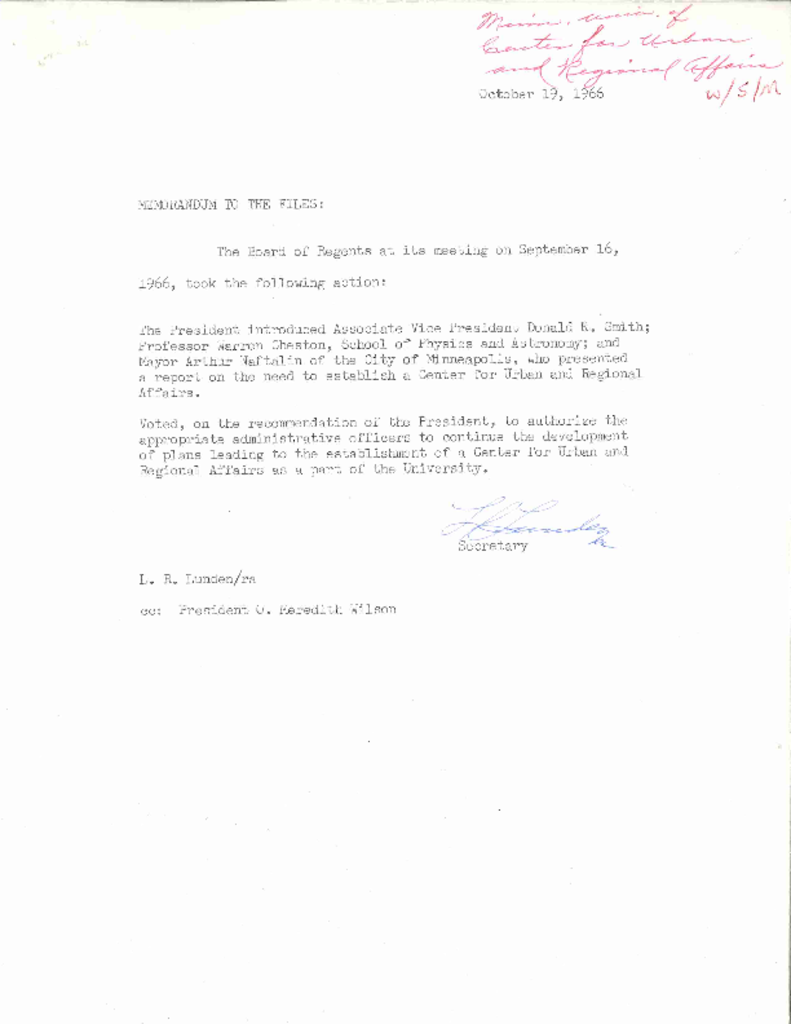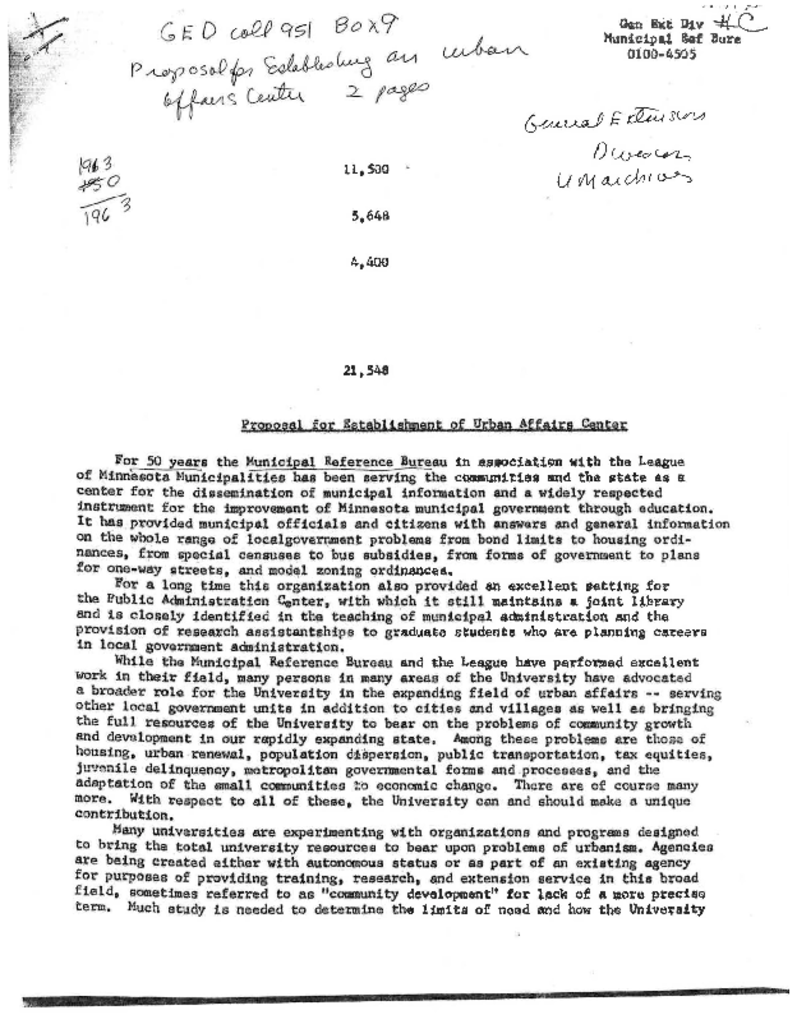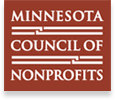In 2018 the Center for Urban and Regional Affairs (CURA) celebrates its 50th year. We are taking this anniversary as an opportunity to thank all of our partners and supporters for their part in all that CURA has accomplished since 1968. We plan to celebrate the anniversary all year long! Look for short features on this website highlighting some of the most memorable projects and people in CURA’s history.
"Why didn’t we know? And what should we be doing about it?"
To celebrate the 50th anniversary of the Center for Urban and Regional Affairs, we have carefully selected a collection of historical documents that reflect the early life of CURA. The documents include photos, letters, proposals and articles that emphasize the importance of establishing a place at the University of Minnesota to address the so-called “Urban Crisis” of the late 1960s in the Twin Cities. At its core, CURA was founded with the intention to connect the resources of the University of Minnesota with the interests and needs of urban communities and the region for the benefit of all. Through this collection, we see that CURA’s foundational intentions and purpose have remained a significant part of who we are today.
“Why didn’t we know? And what should we be doing about it?”
- Will Craig, CURA Assistant Director 1970-1998 and Associate Director 1999-2014
When we asked CURA’s former Assistant Director and then Associate Director Will Craig for his perspective on CURA’s founding, he offered up the above quote that refers to the questions being asked by members of the legislature after the civil unrest of the late 1960s. It encapsulates the thinking in many of the foundational documents that we found and provides a framework for the original ideas circulating in the early years of CURA.
Why didn’t we know?
Although municipal research and general information was being disseminated by the Municipal Reference Bureau throughout the 1960s, the Twin Cities region was lacking a center that focused specifically on urban affairs. The civil unrest in 1966 and 1967, primarily along Plymouth Avenue in North Minneapolis, was a wakeup call that forced city, state, and university officials to confront large, societal issues such as poor housing, poverty, families in disarray, a stagnating economy, crime, and a crumbling infrastructure.
What should we be doing about it?
The University of Minnesota and CURA saw the unrest as an opportunity to help address the issues and needs of the Twin Cities region and beyond. With research and education, CURA would incubate new programs to make the University more responsive to community needs, additionally increasing the interaction between faculty, students, and anyone dealing directly with public problems.
CURA has certainly evolved since the 1960s, but you can see antecedents to many of our current programs in our founding tactics and programs. Today, many of our successful programs continue to be needed–what seemed to be root problems in the past have turned out to be symptoms of more fundamental adjustments that must be made within local communities and beyond. Through our efforts to share research and knowledge between the University and the community, we are continuously evolving to benefit all.
Esther Wattenberg: One of CURA's finest since (almost) the beginning
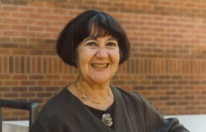
At the age of 99, Esther Wattenberg is putting the capstone on a distinguished and widely celebrated career. She has only recently begun to slow down her schedule of meetings with colleagues and authoring of her admired Notes from a Cluttered Desk. And it is only recently that she began to accept the retrospective profiles and awards that come in the twilight of one’s career. CURA has been one of Wattenberg’s homes for nearly all of our 50 years, so we join in and say “Thank you” to Esther Wattenberg for being a part of what makes us special.
Early in her career, Wattenberg recognized a significant need for child protection reform and set out to identify the systemic changes needed to improve the lives of vulnerable children and families. Her approach to this was a lifelong mission of in-depth research, partnerships, advocacy, and writing and reflecting about her experiences.
"Concentrating on improving the linkages between school social workers and child protection staff should be paramount in future planning for child welfare."
—Esther Wattenberg
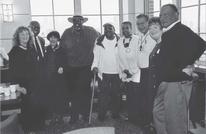
Wattenberg was born in London, Ontario in 1919. She received a Bachelor of Arts from the University of Western Ontario, a Master of Arts from the University of Toronto, and an additional Master of Arts from the School of Social Service Administration at the University of Chicago. Later, she completed post-graduate work at the London School of Economics.
In 1964, Wattenberg joined the faculty at the University of Minnesota after moving to Minneapolis with her husband—the prominent cancer researcher Lee Wattenberg—who was attending medical school at the University.
In September 1967, the University of Minnesota began a New Careers program with Wattenberg as Project Director. This program provided an innovative mix of sheltered education, employment, and social support by assisting low income people's entrance into the job market, by improving the quality of social services by helping the providers relate and emphasize with their clientele, and by creating socially useful jobs at the entry level.
By 1972, Esther was appointed both as an associate professor in the School of Social Work and as a researcher for CURA and sometime later was promoted to professor of social work and coordinator of the CURA social services program.
In 1991 Wattenberg published the Study of Paternity Decisions of Young, Unmarried Parents with over $250,000 in funding from the McKnight and Ford foundations. This research led to every out-of-wedlock child finding their chances improved for a legal connection to a father.
In 1992 Wattenberg co-founded and directed the Advanced Studies in Child Welfare (CASCW) with Jean Quam, then director of the School of Social Work, in a joint effort with the Minnesota Department of Health and Human Services. CASCW became the home of federal Title IV-E funding for Child Welfare Scholars, which provided specialized training related to child protection, foster care, and permanency that the School of Social Work didn’t have at the time. Although Wattenberg left her position as director in 2001, CASCW continues her mission of improving the wellbeing of children and families by educating human service professionals, fostering collaborations across systems and disciplines, informing policy makers and the public, and expanding the child welfare knowledge base.
As a writer, Wattenberg has had opinion pieces published in The New York Times and Star Tribune and reflected on her research and methods as editor for the CASCW publication Practice Notes, a monograph linking research and best practice for child welfare practitioners.
"Kin and friends, neighbors and daycare providers, all of us, should be part of a young child's protection system." —Esther Wattenberg, Star Tribune, 1999
Today Wattenberg is not quite done. Until recently, she maintained office hours and responsibilities in her role as professor of social work. Her famous “cluttered desk” at CURA remained a testament to her work and served as inspiration for her latest series of writing Notes from a Cluttered Desk. She is also a member of many local and national boards and organizations, including the Hennepin County Children’s Justice Initiative.
It is difficult to sum up a career and life like Wattenberg's, but in an interview for the CASCW publication CW360 Child Welfare Reform, Esther pinpoints four pillars that do just that:
- The capacity to experience love in a close relationship;
- To be a loving member of a family;
- The capacity for productive work;
- And the capacity to contribute a positive presence within a community.
Considering Wattenberg’s endless work and significant impact on the community, all while raising six children alongside her longtime husband Lee, it is evident that Wattenberg has had both a successful life and a meaningful career.

Significant Publications:
- Study of Paternity Decisions of Young, Unmarried Parents (1991)
- Progress Report on Education, Minneapolis New Careers Program (1968)
- Child Welfare System, Under Fire, Staggers On, The New York Times (1995)
- A Collection of Editorials By Esther Wattenberg
* For a full list of Esther Wattenberg's publications with links, click here.
Other Profiles on Esther Wattenberg:
- A Life's Work: Reflections on Child Welfare Policy and Practice, pg. 35, CW360 Welfare Reform, 2016
- Perspectives on Retirement, Old News, University of Minnesota Center on Aging
- New Careers Program: A Retrospective
CURA as incubator: nonprofits and governmental entities that started at CURA

“‘What more can the University do?’ in response to urban problems. [CURA] does this by initiating programs that are ‘pilot, experimental, or short-term’ in order to ‘discard unsuccessful ones’ and ‘help to build successful ones.’” — John Borchert, CURA Director 1968-1978
Over the years CURA has positioned itself as an organization that provides mentorship, seed funding, research aid, and administrative support to a variety of projects and programs addressing urban problems. Many of these have spun off into established nonprofits that are continuously evolving and working to address important issues in the present day. Here we take a closer look at a few CURA-incubated organizations, recognizing what our role was in the early days and how they’ve since evolved.
Government Training Services (GTS)
GTS Educational Events serves government agencies and civic organizations with educational event planning and management to ensure they have the knowledge and skills needed to make positive change for themselves and the communities they serve.
CURA cooperated and assisted in the development of the GTS program by forming a group of local government officials, state legislators, and higher education representatives to encourage and offer mentorship. Established under the state’s Joint-Power’s Act, the program was expected to bring together consumers and providers of local Minnesota government training in order to assess training needs systematically, develop new programs and techniques, and evaluate programs for its member organizations. GTS transitioned into a nonprofit in 2003.
Minnesota Council of Nonprofits (MCN)
The Minnesota Council of Nonprofits (MCN) was founded in 1987 to meet the increasing information needs of nonprofits and to convene nonprofits to address issues facing the sector. It is the largest state association of nonprofits in the U.S. Through MCN, nonprofits join together across interest areas to work on issues of common concern to all.
Originally formed as the “Philanthropy Project” in 1983, a group of community leaders, including CURA’s then Coordinator of Community Development Programs Fred Smith, discussed what the future held for the nonprofit sector and what they could as a collective. Together they designed a new organization, the Minnesota Council of Nonprofits, that would create a more powerful collective voice for nonprofits in order for them to share ideas and collaborate to achieve their missions. CURA provided administration support, grants, and graduate student research in hopes of driving the organization further towards its goals.
Minnesota Housing Partnership (MHP)
Minnesota Housing Partnership (MHP) convenes, guides, and supports a diversity of partners working to improve conditions of home and community. Building on decades of experience, we strengthen development capacity and promote policies that expand opportunity, especially for people at the lowest income levels.
Minnesota Housing Partnership began in 1987 as an informal coalition of community groups and nonprofit developers. The organization assists Minnesota communities to create, improve, and preserve the conditions of home and community through providing loans and grants, tech assistance, organizational capacity-building and public policy initiatives. MHP was incorporated as a member-based nonprofit organization in 1989.
Minnesota Prison Doula Project (MnPDP)
The Minnesota Prison Doula Project (MnPDP) provides pregnancy and parenting support for incarcerated pregnant people and mothers. We provide birth support from trained doulas, as well as group-based and individual education and support. The goal is to nurture healthy relationships and increase parenting confidence and skills. We work with those serving sentences in the Minnesota Correctional Facility - Shakopee (Minnesota’s only women’s state prison) and women held in county correctional facilities throughout Minnesota.
The MnPDP, in partnership with Assistant Professor at the University of Minnesota Medical School Dr. Rebecca Shlafer, is part of an ongoing research and evaluation process of prison-based pregnancy, birth and parenting issues. Starting in 2015 CURA provided an administrative home and physical space for the MnPDP as the organization grew and has just recently launched as its own 501c3. The organization provides birth support from trained doulas, parenting education groups, and one-on-one counseling for incarcerated pregnant people and mothers.
Artspace
Artspace is now a national leader in the field of developing affordable space that meets the needs of artists through the adaptive reuse of historic buildings and new construction.
At the request of Artspace, CURA helped to develop a computer-assisted information management system that registered local artists looking for work spaces and provided an inventory of such available spaces. The system became the basis for securing foundation funding with CURA assisting in the proposal development. CURA was acknowledged for its pivotal significance on the Artspace’s survival, which has established itself as a national model for linking arts development organizations throughout the country and providing affordable space that accommodates the needs of artists.
Minnesota Land Management Information Center
MnGeo transferred from the Department of Administration to MNIT Services on July 1, 2012. The office is directed by Dan Ross, the State's Chief Geospatial Information Officer. The CGIO is accountable to the State’s Chief Information Officer and is actively engaged in the state’s legislatively mandated initiative to consolidate all executive branch IT under the direction of the CIO. Funding for core MnGeo functions is provided through a budgetary appropriation. Funding for project consulting is provided on a cost-recovery basis through contracts with other agencies.
LMIC began as a research and development project at CURA in the late 1960s well before GIS technology was available in the marketplace. At the time, CURA was closely involved with the development and incubation of the technology and worked actively to bring GIS education to state and local governments. LMIC came to be one of the premier GIS centers in the world and conduct numerous environmental projects while serving all levels of the government as well as the private sector. By 1977 the Center was fully developed and moved to the Minnesota state government and in 2009 the Minnesota legislature created the Minnesota Geospatial Information Office (MnGeo) to succeed LMIC.
50 years of CURA connections at the University of Minnesota
Over the past 50 years CURA projects and programs have had a significant impact on the University of Minnesota. Our work has reached across the the state of Minnesota, allowing us to create strong ties with a diverse set of departments and colleagues to help address important issues that stretch beyond the University. Here we present a look at the institutions and programs that CURA helped launch and/or strongly supported throughout the years. This interactive story map invites you to gather an understanding of the issues addressed, CURA’s impact or role, and how the units have evolved since.
If you have previously worked with CURA on a project or program involved with the University, or were impacted by our work, we would love to hear your recollections of the experience. Feel free to send your thoughts to [email protected] and let us know if we can share it as part of #CURA50.
Here are descriptions of the map categories that show how we tried to divide up CURA's role in creating these connections. You will notice that some connections appear in more than one category:
- Advising: offered direction, support, outlook
- Fostering: provided physical space, encouragement, acknowledged potential
- Incubated: involved in the process of invention, root growth...
- Convening: assembled, organized , and/or unified [a broader set of ideas]


